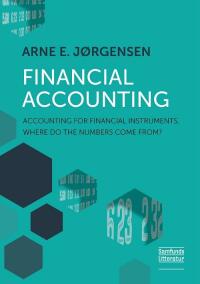Question
Provide answer with 100% accuracy. Thanks! Provision for Doubtful Debt on first April, 2019 was 21,534. During the year 2019 - 20 the Bad-commitment and
Provide answer with 100% accuracy. Thanks!
Provision for Doubtful Debt on first April, 2019 was 21,534. During the year 2019 - 20 the Bad-commitment and Recovery of Bad-commitment were 10,546 and 2,148 independently. The Sundry Debtors on 31st March, 2020 were 2,25,498. Course of action is to be made @ 5.3682% on Debtors. If on 31st March, 2020, there was additional Bad-commitment of ' 2,53927 then what should be the game plan for implausible commitment ?
(i). Cost of unordinary wastage is:
(a) Charged to the thing cost
(b) Charged to the advantage and setback account
(c) charged to some degree to the thing and deficiently advantage and hardship account
(d) not charged using any and all means.
(ii). Calculate re-demand level from the going with: Safety stock: 1000 units, Use every week: 500 units. It requires 12 weeks to show up at material from the date of mentioning.
(a) 1000 units
(b) 6000 units
(c) 3000 units
(d) 7000 units
(iii). From the going with information, process the extra cost of material by following EOQ: Annual consumption: = 45000 units
Mentioning cost per order: = $ 10 Carrying cost for every unit per annum: = $ 10 Purchase cost for each unit = $ 50
Re-demand sum at present = 45000 units
There is refund of 10% per unit in case of obtaining of 45000 units in mass.
(a) No saving
(b) $ 2,00,000
(c) $ 2,22,010
(d) $ 2,990
(iv). Which of coming up next is a weird justification Idle time:
(a) Time taken by workers to dare to all aspects of the distance between the essential entryway of assembling plant and spot of their work
(b) Time lost between the finishing of one work and start of next work
(c) Time spent to meet their own necessities like taking lunch, tea, etc
(d) Machine break downs
(v). If extra time is gone to at the aching of the customer, by then the additional time premium:
(a) should be charged to costing advantage and adversity account;
(b) should not be charged using any and all means
(c) should be charged to the work directly
(d) should be charged to the most raised advantage making office
(vi). Labour turnover infers:
(a) Turnover created by work
(b) Rate of progress in sythesis of labor force during a foreordained period
(c) Either of the previously mentioned
(d) Both of the previously mentioned
(vii). Which of coming up next is surely not an avoidable justification work turnover:
(a) Dissatisfaction with Job
(b) Lack of getting ready workplaces
(c) Low wages and settlements
(d) Disability, making a worker unacceptable for work
(viii). Costs related with the work turnover can be grouped into:
(a) Preventive Costs in a manner of speaking
(b) Replacement costs figuratively speaking
(c) Both of the previously mentioned
(d) Machine costs
(ix). Calculate workers left and delivered from the going with:
Work turnover rates are 20%, 10% and 6% independently under Flux system, Replacement procedure and Separation methodology. No. of workers superseded during the quarter is 80.
(a) 112
(b) 80
(c) 48
(d) 64
(x). Calculate the work turnover rate as demonstrated by replacement strategy from the going with: No. of workers on the account: At the beginning of the month: 500, At the month's end: 600
During the month, 5 workers left, 20 experts were delivered and 75 experts were enrolled. Of these, 10 workers were joined up with the chances of those leaving and remembering that the rest were secured for an advancement plot.
(a) 4.55%
(b) 1.82%
(c) 6%
(d) 3%
Step by Step Solution
There are 3 Steps involved in it
Step: 1

Get Instant Access to Expert-Tailored Solutions
See step-by-step solutions with expert insights and AI powered tools for academic success
Step: 2

Step: 3

Ace Your Homework with AI
Get the answers you need in no time with our AI-driven, step-by-step assistance
Get Started


